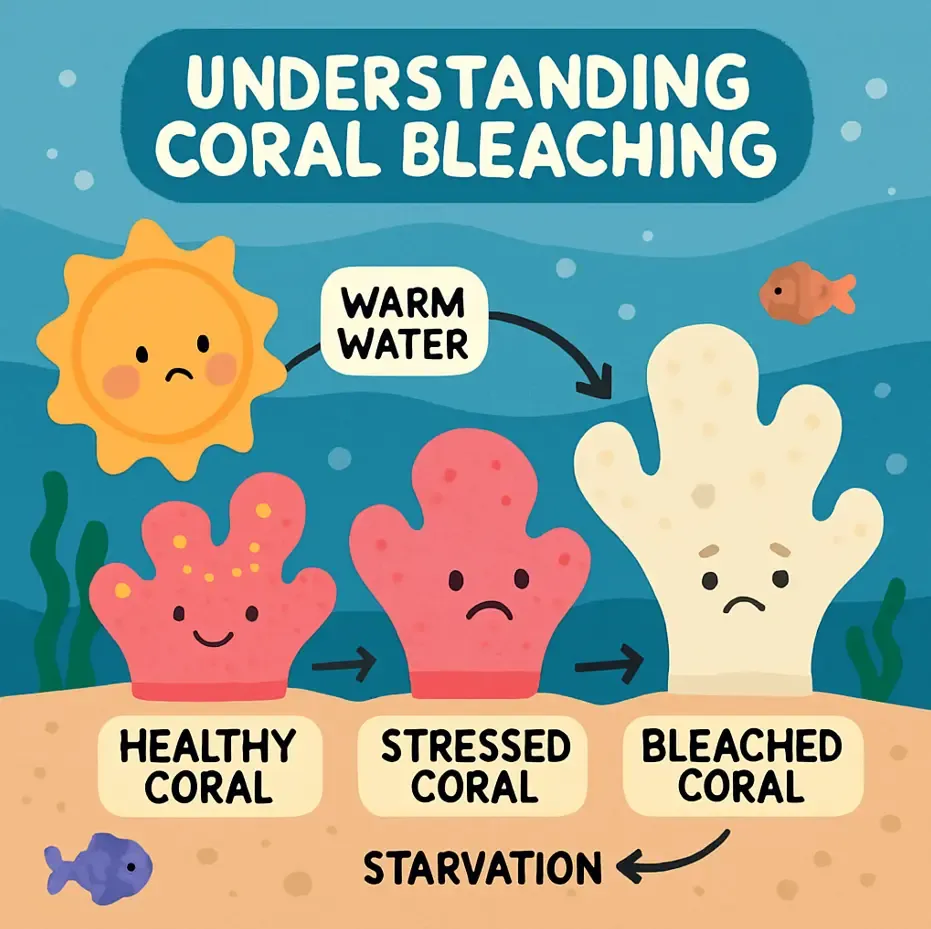Understanding Coral Bleaching — Reading Comprehension
Premium Resource
Grades
- 2
- 3
- 4
Standards
- RI.3.8
- RI.4.8
PRINT+DIGITAL RESOURCE
This learning resource is available in interactive and printable formats. The interactive worksheet can be played online and assigned to students. The Printable PDF version can be downloaded and printed for completion by hand.
About This Reader
This passage delves into the phenomenon of coral bleaching in the Great Barrier Reef. It explains how rising water temperatures stress corals, causing them to expel their symbiotic algae. The text describes the visible effects of bleaching - the coral turning white - and the dire consequences if conditions don't improve quickly. It highlights recent major bleaching events and their widespread impact on the reef. The passage underscores coral bleaching as one of the most significant threats to the Great Barrier Reef's future. Keywords: coral bleaching, Great Barrier Reef, climate change, marine ecosystem, symbiotic algae, coral death, ocean warming, environmental stress, reef conservation, marine biology.
Perfect For:
👩🏫 Teachers
- • Reading comprehension practice
- • Auto-graded assessments
- • Literacy skill development
👨👩👧👦 Parents
- • Reading practice at home
- • Comprehension improvement
- • Educational reading time
🏠 Homeschoolers
- • Reading curriculum support
- • Independent reading practice
- • Progress monitoring
Reading Features:
📖
Reading Passage
Engaging fiction or nonfiction text
❓
Comprehension Quiz
Auto-graded questions
📊
Instant Feedback
Immediate results and scoring
📄
Printable Version
Download for offline reading
🔊
Read Aloud
Voice-over with word highlighting

















